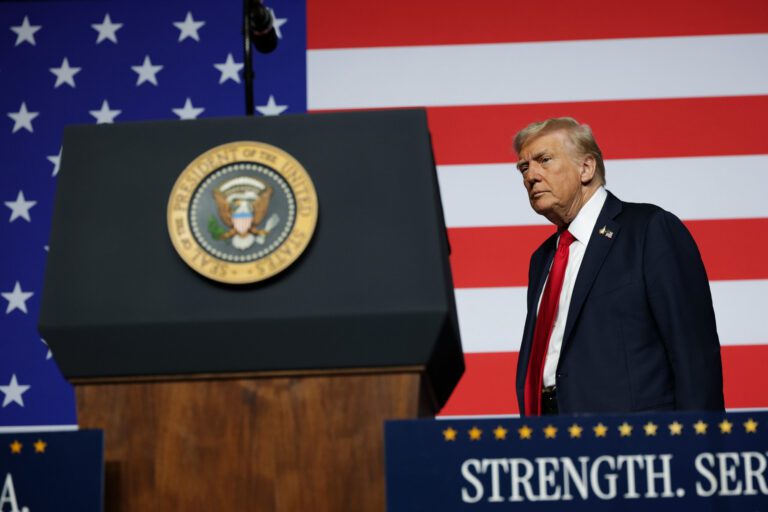Government Shutdown: Trump’s Bid to Cut Spending and Democrat Stalemate
As the government shutdown enters its seventh day, tensions escalate between President Trump and Democratic leaders over federal spending priorities. The ongoing impasse has become a focal point for both parties, with implications for millions of Americans relying on government services.
Trump’s Stance: Eliminating Billions
President Trump has declared his administration’s intent to "permanently eliminate" billions of dollars in spending that he asserts is wasteful and prioritized by Democrats. During a press briefing, Trump affirmed:
“We have a lot of things that we’re gonna eliminate and permanently eliminate… They’ve handed it on a silver platter.”
Infrastructure and Spending Cuts
Among the significant actions taken by the Trump administration is the freezing of $18 billion in infrastructure funds specifically targeted at New York City. This move is seen as a strategic effort to increase pressure on Democratic lawmakers, especially significant figures like Senate and House minority leaders.
Trump emphasized the capacity of his Office of Management and Budget (OMB), led by Director Russ Vought, to cut vital funding:
“He’s a serious person… he’s getting ready to cut things.”
Tactics to Influence Senate Democrats
The White House is employing various tactics to persuade moderate Senate Democrats into compliance with Trump’s demands, including a controversial interpretation of a 2019 law regarding back pay for furloughed federal employees. This could potentially allow the administration to withhold future paychecks:
- Law on Furloughed Employees: Under current legislation, all furloughed employees are entitled to back pay.
- Consequences: House minority leader Congressman Hakeem Jeffries argues any attempt to deny this back pay would be illegal.
“The law is clear: every single furloughed federal employee is entitled to back pay. Period, full stop,” Jeffries asserted.
The Demands: Healthcare and Funding
On the other side of the aisle, Democrats are holding firm, insisting on the continuation of enhanced Affordable Care Act (ACA) subsidies, a major component of their latest funding proposal. The party has expressed non-negotiable demands, indicating they will not offer concessions until their appropriations are fully addressed.
Government Workforce Impact
So far, approximately 750,000 federal employees have been furloughed due to the shutdown, resulting in increasing disruptions to government services:
- WIC Program: The Women, Infants, and Children (WIC) supplemental nutrition program is projected to run out of funding by the week’s end.
- Air Traffic Control: Reports from NBC News detail staff shortages at multiple airports, contributing to delayed flight times. Transportation Secretary Sean Duffy highlighted that the safety of air travel remains the top priority amidst the turmoil:
“If we do not believe we have an adequate number of air traffic controllers working, we will reduce the flow of airplanes in the sky.”
Urgency for Congressional Action
In response to growing concerns, organizations like the National WIC Association have issued urgent calls for congressional action. They stress the importance of passing legislation to:
- Fully fund WIC
- Keep the federal government operational
- Ensure that federal appropriations law is safeguarded against administrative actions
“Every day of inaction brings us closer to a crisis,” the association warned in a statement on September 30.
Conclusion: A Deepening Crisis
As the deadlock persists, both sides appear entrenched in their positions. President Trump views the shutdown as an opportunity to enact significant spending cuts, while Democrats remain firm in their demands related to healthcare subsidies. With critical government services already bearing the brunt of this standoff, the urgency for resolution grows more pressing by the day.
Stay Updated
For further developments on the government shutdown and its implications, follow reliable news sources and official government announcements.
For more insights on the Affordable Care Act, visit HealthCare.gov.


